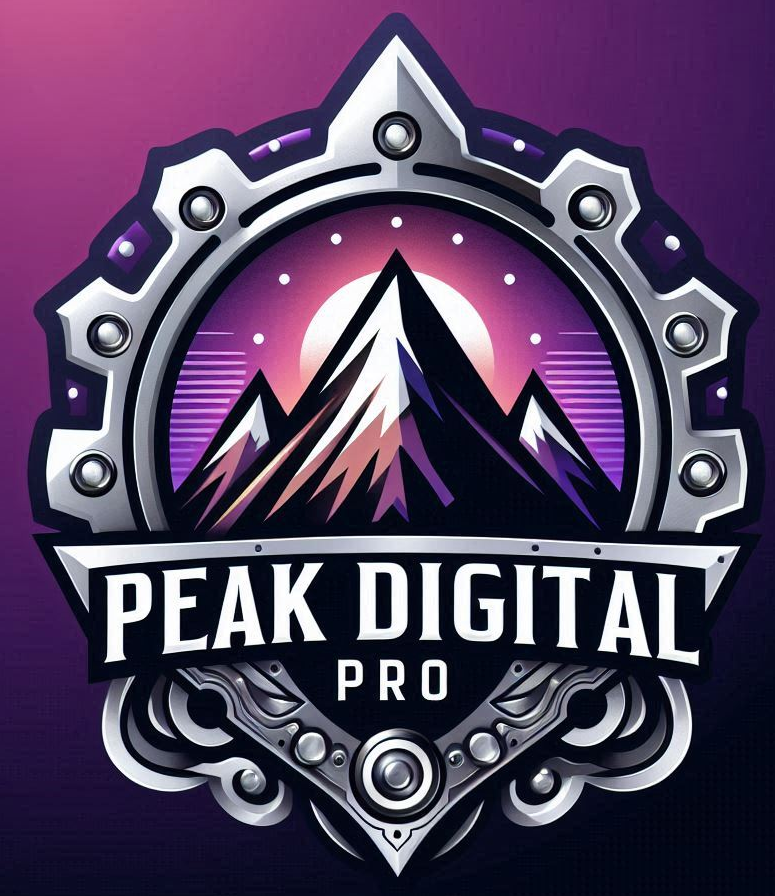Master SEO for E-commerce Stores in 2025: Boost Sales
Every e-commerce store wants more traffic and better rankings on Google. But most sites struggle to even figure out where they stand in search results right now. Over 90 percent of web pages get zero organic traffic from Google at all . That means a deep dive into your SEO performance is not just smart, it is your edge.
Table of Contents
Quick Summary
| Key Point | Explanation |
|---|---|
| 1. Analyze Current SEO Performance | Conduct a comprehensive review using tools to identify strengths and weaknesses in your SEO strategy. |
| 2. Focus on Advanced Keyword Research | Implement tools to find relevant long-tail keywords with lower competition to attract more targeted traffic. |
| 3. Optimize Product Pages for SEO | Enhance product descriptions with engaging content and technical elements to improve search visibility and conversions. |
| 4. Develop a Content Marketing Strategy | Create diverse content that addresses audience needs and integrates SEO strategies for better engagement. |
| 5. Monitor and Adjust SEO Tactics | Regularly review performance metrics and adapt your strategies in response to changes in search behavior and algorithms. |
Step 1: Analyze Your Current SEO Performance
Analyzing your current SEO performance is the critical foundation for transforming your e-commerce store’s online visibility and sales potential. This comprehensive assessment provides a clear roadmap of where your website stands and identifies precise opportunities for strategic improvement.
Performance Tracking Tools are essential for this initial evaluation. Professional SEO platforms like Google Search Console and SEMrush offer comprehensive insights into your website’s current search engine performance. These tools reveal critical metrics such as organic search traffic, keyword rankings, click-through rates, and potential technical issues that might be hindering your visibility.
Begin by conducting a thorough technical SEO audit. Examine your website’s loading speed, mobile responsiveness, and crawlability. Google’s PageSpeed Insights provides detailed diagnostic information about your site’s performance across different devices. Pay special attention to elements like server response times, image optimization, and browser caching. Even minor technical improvements can significantly impact your search rankings and user experience.
Keyword analysis represents another crucial component of your SEO performance review. Identify which keywords currently drive traffic to your e-commerce store and assess their relevance and performance. Look for high-performing keywords with substantial search volume but moderate competition. Our guide on advanced keyword strategies can help you refine this process.
Competitive benchmarking adds another critical dimension to your analysis. Examine the top-performing e-commerce stores in your niche and understand their SEO strategies. Analyze their content structure, backlink profiles, and keyword targeting. This research helps you identify gaps in your current approach and discover potential opportunities for differentiation.
Document all findings meticulously. Create a comprehensive report that includes:
- Current organic search traffic volume
- Top performing keywords
- Website technical performance scores
- Identified SEO strengths and weaknesses
A successful SEO performance analysis transforms raw data into actionable insights. By understanding your current digital landscape, you can develop targeted strategies that dramatically improve your e-commerce store’s search engine visibility and sales potential.
Step 2: Conduct Comprehensive Keyword Research
Keyword research transforms your e-commerce strategy from guesswork to precision targeting. This critical step helps you understand exactly what potential customers are searching for and how to position your online store to meet their needs.
Advanced Keyword Discovery begins with selecting powerful research tools like Google Keyword Planner, SEMrush, and Ahrefs. These platforms reveal crucial insights about search volume, competition levels, and user intent. Focus on identifying long-tail keywords specific to your product categories. These more specific phrases often have lower competition and higher conversion potential compared to broad, generic terms.
Understand the nuanced differences between informational, navigational, and transactional keywords. Informational keywords indicate users seeking knowledge, navigational keywords show users looking for specific websites, and transactional keywords signal purchase intent. For e-commerce stores, prioritize transactional and commercial investigation keywords that demonstrate strong buying signals.
Learn more about strategic search query techniques to refine your keyword selection process. Consider your target audience’s language, pain points, and specific search behaviors. Analyze customer reviews, forum discussions, and social media conversations to uncover natural language patterns and emerging search trends.
Create a comprehensive keyword matrix that categorizes potential search terms based on:
- Search volume
- Competition level
- Relevance to product offerings
- User purchase intent
- Potential conversion rates
Do not simply chase high-volume keywords. Instead, develop a strategic mix that balances reach, relevance, and realistic ranking potential. Look for keywords with moderate search volume and lower competition where you can realistically establish a strong presence.
Successful keyword research goes beyond data collection. It requires continuous refinement and adaptation. Regularly update your keyword strategy by monitoring performance metrics, tracking ranking changes, and staying attuned to evolving market dynamics. Your goal is building a dynamic, responsive keyword approach that consistently drives qualified traffic to your e-commerce store.
Step 3: Optimize Product Pages for SEO
Product page optimization represents the core of e-commerce SEO success. This critical step transforms your individual product listings from simple descriptions into powerful search engine magnets that attract and convert potential customers.
Strategic Content Development is paramount for product page optimization. Each product description must go far beyond basic specifications. Craft unique, compelling narratives that solve customer problems and highlight specific product benefits. Include detailed, natural keyword integration that reads smoothly while addressing potential search queries. Avoid keyword stuffing and focus on creating authentic, informative content that genuinely helps customers make purchasing decisions.
Technical optimization plays an equally crucial role in your product page strategy. Implement structured data markup to help search engines understand your product details more precisely. Use schema.org vocabulary to provide clear signals about price, availability, reviews, and product specifications. Explore our comprehensive guide on crafting SEO-friendly product pages to refine your approach and ensure maximum search visibility.
Image optimization cannot be overlooked in modern e-commerce SEO. Compress images for fast loading while maintaining high visual quality. Use descriptive, keyword-rich file names and alt text that provide context for search engines. Implement multiple high-resolution images from different angles, enabling potential customers to thoroughly examine products while simultaneously improving your page’s SEO potential.
Evaluate your product pages against these critical optimization criteria:
- Unique, engaging product descriptions
- Clear, descriptive product titles
- High-quality, optimized images
- Structured data markup implementation
- Customer review integration
- Mobile responsiveness
- Fast page loading speed
Remember that product page optimization is an ongoing process. Continuously monitor page performance, user engagement metrics, and search rankings. Regularly update content, refresh images, and adapt to changing search algorithms. Your goal is creating dynamic, user-focused product pages that not only rank well but also effectively convert visitors into customers. By treating each product page as a strategic marketing asset, you transform your e-commerce store into a powerful, search-optimized sales machine.
Here is a checklist to help you evaluate whether your product pages are fully optimized for SEO. Use this table as a reference to ensure all critical elements are covered before publishing a product page.
| Optimization Element | Description | Status (Yes/No) |
|---|---|---|
| Unique, engaging descriptions | Content is original and answers user needs | |
| Clear, descriptive titles | Titles include target keywords and clarity | |
| High-quality, optimized images | Images are compressed and have alt text | |
| Structured data markup | Schema markup for rich search results | |
| Customer review integration | Reviews are present and visible | |
| Mobile responsiveness | Page layout adapts to mobile devices | |
| Fast page loading speed | Page loads quickly on all devices |

Step 4: Implement a Content Marketing Strategy
A robust content marketing strategy transforms your e-commerce store from a simple online shop into an authoritative resource that attracts, engages, and converts potential customers. This step focuses on developing a comprehensive approach that seamlessly integrates valuable content with your SEO objectives.
Strategic Content Planning requires understanding your target audience’s precise needs and search behaviors. Begin by mapping out content that addresses customer pain points, answers common questions, and provides genuine value beyond product descriptions. Develop a diverse content mix including how-to guides, product comparisons, industry insights, and customer success stories. Keyword research from previous steps will inform your content topics, ensuring each piece has strategic search potential.
Explore our comprehensive content marketing roadmap to refine your approach. Focus on creating long-form, in-depth content that demonstrates expertise and builds trust. Video content, comprehensive buying guides, and interactive product tutorials can significantly enhance user engagement and search engine visibility.
Content distribution is equally critical as content creation. Develop a consistent publishing schedule that maintains audience interest and signals active website management to search engines. Utilize multiple channels including your blog, social media platforms, email newsletters, and industry forums. Each piece of content should include clear calls-to-action and internal links that guide users through your product ecosystem.
Evaluate your content marketing strategy against these essential criteria:
- Alignment with target audience interests
- Strategic keyword integration
- Consistent publishing schedule
- Diverse content formats
- Clear conversion pathways
- Measurable engagement metrics
- Mobile-friendly presentation
Remember that content marketing is a continuous process of learning and adaptation. Regularly analyze performance metrics, track user engagement, and be prepared to pivot your strategy based on real-world data. Your goal is creating a dynamic content ecosystem that not only improves search rankings but also establishes your e-commerce store as a trusted industry authority. By consistently delivering high-quality, valuable content, you’ll attract more qualified traffic and convert visitors into loyal customers.
Step 5: Monitor and Adjust Your SEO Tactics
Monitoring and adjusting your SEO tactics is the critical final stage that transforms your strategy from static to dynamic. This ongoing process ensures your e-commerce store remains competitive, responsive to market changes, and consistently aligned with evolving search engine algorithms.
Performance Analytics form the foundation of effective SEO monitoring. Leverage powerful tools like Google Analytics, Google Search Console, and SEMrush to track comprehensive performance metrics. Focus on key indicators such as organic traffic, conversion rates, bounce rates, and keyword rankings. Detailed data analysis allows you to identify both successful strategies and areas requiring immediate improvement. Learn more about advanced SEO performance tracking to refine your approach and maximize digital visibility.
Establish a systematic review process that examines your SEO performance at regular intervals. Monthly comprehensive audits provide sufficient time to gather meaningful data while allowing rapid adjustments. During these reviews, compare current performance against baseline metrics established in earlier optimization stages. Look for trends in user behavior, search query changes, and emerging competitive strategies that might impact your e-commerce store’s search visibility.
Adaptability is crucial in modern SEO. Search engine algorithms continuously evolve, and consumer search behaviors shift rapidly. Be prepared to pivot your strategy based on performance data. This might involve updating product descriptions, refreshing content, adjusting keyword targeting, or redesigning page structures to improve user experience and search rankings.
Evaluate your SEO monitoring strategy against these critical benchmarks:
- Consistent performance tracking
- Monthly comprehensive audits
- Rapid response to performance changes
- Continuous keyword relevance assessment
- User experience optimization
- Competitive landscape analysis
- Technical SEO health monitoring
Remember that SEO is not a one-time task but an ongoing commitment. Successful e-commerce stores view SEO as a dynamic, adaptive process. By maintaining a proactive approach to monitoring and adjusting your tactics, you create a resilient digital strategy that can withstand algorithm updates, market shifts, and emerging competitive challenges. Your ultimate goal is building an agile, data-driven SEO approach that consistently drives qualified traffic and maximizes your online sales potential.
To help you organize your ongoing SEO efforts, use this table as a monthly SEO monitoring checklist. It summarizes the key activities and benchmarks to review for maintaining and improving your e-commerce search performance.
| Task | Purpose | Frequency |
|---|---|---|
| Track performance metrics | Assess traffic, conversions, and rankings | Monthly |
| Conduct comprehensive SEO audits | Identify issues and new opportunities | Monthly |
| Review keyword relevance | Ensure targeting aligns with user behavior | Monthly |
| Analyze competitive landscape | Stay ahead of competitors | Monthly |
| Monitor technical SEO health | Fix site errors and improve performance | Monthly |
| Update product/content strategies | Adapt to algorithm or market changes | As Needed |
| Optimize user experience | Enhance site navigation and engagement | Ongoing |
Transform Your E-Commerce SEO and Watch Sales Soar
You know the frustration of seeing stagnant online sales despite your best marketing efforts. This article has shown how crucial steps like technical SEO audits, advanced keyword research, and dynamic content strategies are for growing your e-commerce store. But putting these tactics into action can feel overwhelming without the right guidance and expertise. Many business owners struggle to keep pace with algorithm changes, technical optimization, and performance analytics. That uncertainty is stopping you from reaching the next level of growth.

Take your momentum from this guide and let Peak Digital Pro turn your insights into real results. As a leading Colorado Springs digital marketing firm , we offer expert support in web development, ongoing SEO monitoring, and innovative AI-powered marketing. Visit Peak Digital Pro now to discover how our tailored solutions can help you outrank the competition, boost sales, and build lasting customer loyalty. Act now to secure your advantage and start seeing measurable results this quarter.

Frequently Asked Questions
What is the importance of analyzing current SEO performance for my e-commerce store?
Analyzing current SEO performance is crucial as it provides a clear understanding of your website’s digital landscape, identifies strengths and weaknesses, and helps you develop targeted strategies to improve online visibility and sales.
How can I effectively conduct keyword research for my e-commerce products?
Use tools like Google Keyword Planner and SEMrush to discover relevant long-tail keywords with lower competition. Focus on understanding user intent and categorize keywords based on search volume, relevance, and potential conversion rates.
What are the key elements to optimize on my product pages for better SEO?
Key elements include creating unique and engaging product descriptions, using high-quality images with optimized alt text, implementing structured data markup, and ensuring mobile responsiveness and fast loading times.
How often should I monitor and adjust my SEO strategies?
Regularly monitor your SEO strategies, ideally conducting comprehensive audits monthly to analyze performance metrics. This allows for timely adjustments in response to evolving search engine algorithms and user behaviors.
Recommended
-
[
How Websites Drive Sales: Key Strategies for Business Owners in 2025
]( https://peakdigital.pro/2025/06/28/how-websites-drive-sales-business-owners-2025 )
-
[
What Is SEO? Simple Guide for US & Colorado Businesses 2025
]( https://peakdigital.pro/2025/07/16/what-is-seo-guide-for-us-and-colorado-businesses )
-
[
Small Business Website Effectiveness and the Impact of AI Search Implementations
-
[
What Is Local SEO? Guide for US and Colorado Businesses 2025
]( https://peakdigital.pro/2025/07/23/what-is-local-seo-guide-for-us-and-colorado-businesses-2025 )







